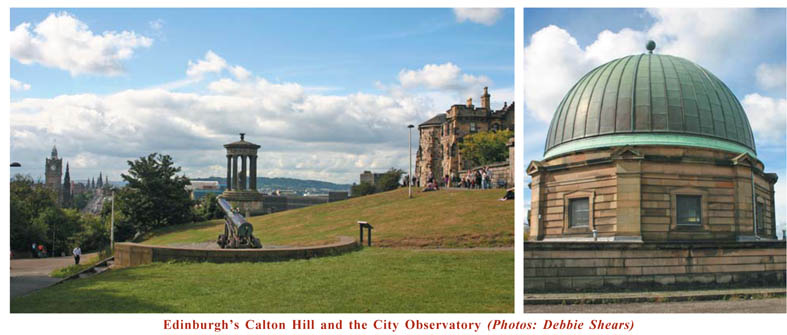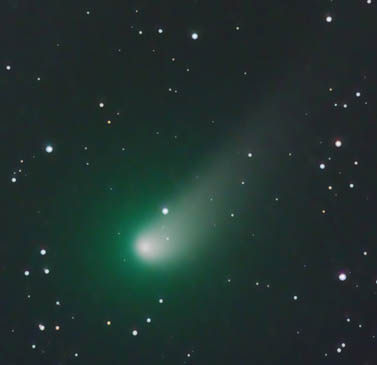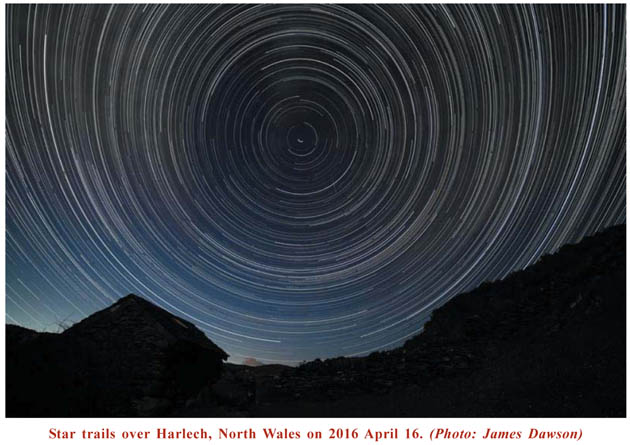From the President: Edinburgh Exhibition and Chester Meeting
2017 May 21
I hope many members will have had the opportunity to observe Jupiter in recent weeks. I have enjoyed some fine views of the Great Red Spot through my 100mm refractor and, when the seeing has been good, there has been a wealth of detail visible in the belts. Mike Hezzlewood, from Lancashire, has made a very nice series of sketches of the planet, one of which is shown here. Committing to paper what you can see in the eyepiece certainly helps to train your eye to see even more detail.
Do grab the opportunity now to observe Jupiter as it will be even further south of the celestial equator over the next few years – approaching hedge-top height in my case – although observers in the southern hemisphere will of course enjoy fine views. Jupiter is also currently escorting the Juno spacecraft and I hope you have been keeping up with the analysis of the latest results from the mission that John Rogers provides on the BAA website.

The BAA Exhibition in Edinburgh
Our Exhibition this year takes place on Saturday June 24 from 10 a.m. to 5 p.m. Lorraine Crook has arranged a splendid venue: the National Museum of Scotland in Edinburgh. This is a great opportunity to meet up with Section Directors and others to learn more about the work of the Sections. Short talks will be presented by Section Directors at intervals throughout the day. Our Sections form the core of our mission at the BAA and the Association caters for all levels of interest and skill, so don’t worry about asking what may seem to you like simple questions. You can find out what projects your fellow members are involved with and you might even find a new area where you could contribute. Or simply come along for a chat.
Prof Ian Robson of the Royal Observatory Edinburgh and the Science and Technology Facilities Council will also be giving a talk in the afternoon. Entrance to the Exhibition and the talks is free to all – why not bring some friends along?
There are several astronomy related sites in Edinburgh, which is home to the Royal Observatory Edinburgh on Blackford Hill. Not too far from the Exhibition venue is Calton Hill, topped by the City Observatory. It’s well worth a walk up the hill to see the observatory buildings and enjoy the view over Princes Street to the Castle, as I did last year as shown in the accompanying photographs. A further short stroll will take you to 21 East Claremont Street, in Edinburgh’s attractive New Town, from where Dr Thomas David Anderson (1853–1932) discovered two bright novae: Nova Aurigae 1891 and Nova Persei 1901. His elegant terraced house is marked with a blue plaque to commemorate the event (see the JBAA, 2014 December).
The Comet Section heads to Northampton The last few weeks have seen a flurry of interesting comets in the sky. Whilst none has reached naked eye visibility, binocular users, telescopic observers and imagers have all enjoyed tracking down their quarry. Comet Section Director Nick James issued a BAA Observer’s Challenge to observe some of these and we were delighted by the number of observations received, several of which were uploaded by observers onto their BAA Member’s pages. Nick provides a roundup of recent comet observations below.
The last few weeks have seen a flurry of interesting comets in the sky. Whilst none has reached naked eye visibility, binocular users, telescopic observers and imagers have all enjoyed tracking down their quarry. Comet Section Director Nick James issued a BAA Observer’s Challenge to observe some of these and we were delighted by the number of observations received, several of which were uploaded by observers onto their BAA Member’s pages. Nick provides a roundup of recent comet observations below.
The Comet Section will meet in Northampton on Saturday June 17. Nick has arranged an excellent line-up of speakers from both the professional and amateur communities. You don’t have to be a Section member to attend, but please let Nick know if you do intend to come so he can get an idea of numbers.
Nick has also just released the latest edition of the Comet Section Observing Guide. This is a great resource for anyone interested in observing these fascinating members of our solar system, either by visual means or by imaging. So whether you want to start observing comets, or you are already very experienced, you can find the Guide at https://britastro.org/node/6817
The BAA weekend meeting at Chester
Talking of travelling, I hope you will consider coming to the BAA’s autumn weekend meeting at Chester on September 8 to 10 on the theme of ‘Stars: Life and death of the Universe’. The venue is The King’s School, Chester and I am proud to say that our hosts will be my own club: Chester Astronomical Society. There will be talks on Friday evening and all day Saturday, with an optional visit on Sunday morning to the OpTIC Centre at St Asaph in North Wales, which specialises in the manufacture of advanced optical systems for space missions. Booking details can be found on the BAA website and on the back cover of this Journal.
You might like to extend your stay to explore the sights of this historic city, with its Roman amphitheatre, imposing city walls, cathedral and its half-timbered shops called The Rows which date back to the thirteenth century.
Circulars, Newsletter and ebulletins
Our good friend Don Miles has recently announced his intention to stand down as Circulars Editor after more than thirty years of service. The Association owes Don, a Lydia Brown medallist, a huge debt of gratitude for producing the BAA’s paper Circulars ever since he issued his first one in 1986. We wish Don well in his future endeavours.
Council has considered the future of the Circulars very carefully and decided that now is the time to discontinue producing them. In the past, topical information about observing opportunities, and other announcements, was only readily available via the Circulars. With the development of e-mail and the internet this is no longer the case and postal subscriptions have reached minimal numbers. We will be in touch with subscribers regarding subscription refunds if wanted.
Council has also agreed to introduce a BAA Newsletter that will be sent by e-mail to all members who have provided us with an e-mail address. The aim of the Newsletter, launched in early May, is to keep members informed about upcoming events including BAA meetings, announce the publication of the next edition of the Journal, and to broadcast other news items. The Newsletter will not replace the existing BAA ebulletins, which will continue to be used for rapid communication of time-sensitive events in the sky.
Janice McClean, a new member of the Board of Trustees and of Council, has kindly agreed to edit the Newsletter. I hope you like the fresh modern layout and that you will enjoy reading it – should you no longer wish to receive the Newsletter, you simply need to click on the ‘Unsubscribe’ link provided within it. And if you didn’t receive the first issue in early May – do we have your latest e-mail address? Do contact the BAA office if you don’t receive regular communications from us by e-mail: it’s always possible that your address, even if you haven’t recently changed it, has accidentally ‘slipped through the cracks’.
 The travelling astronomer
The travelling astronomer
Many people will be taking holidays over the next few months. For some this will provide opportunities to visit other countries where unfamiliar parts of the night sky will be more readily visible. For others, there will be astronomical sites to visit or sky scenes to photograph. Why not share your astronomy destinations and observations with others via the BAA Member’s Pages, just as James Dawson did following a holiday in North Wales where he photographed some captivating star trails with a DSLR camera?
When travelling by air, I always find it tricky to make space to pack some observing gear. However, I’ll always take my 8×42 binoculars, and if I’m going to dark skies with the prospect of good views of the Milky Way towards the galactic centre, I’ll also pack my 2.1×42 wide field binoculars. These fit into a pocket, provide impressive wide vistas covering whole constellations, and add about 1.5 magnitudes to my aging eyesight.
Finally if there’s space and weight available, I’ll squeeze in a diminutive 60mm Maksutov and its table top tripod for higher power views. For someone who spends most of his time doing CCD photometry and peering at images as they appear on a computer screen, engaging in visual astronomy becomes a holiday in itself for me!
If you are thinking about which binoculars to buy or to pack, do have a look at Stewart Moore’s helpful tutorial on ‘Binoculars for the travelling astronomer’ at https://britastro.org/node/8825.
Jeremy Shears, President
| The British Astronomical Association supports amateur astronomers around the UK and the rest of the world. Find out more about the BAA or join us. |
